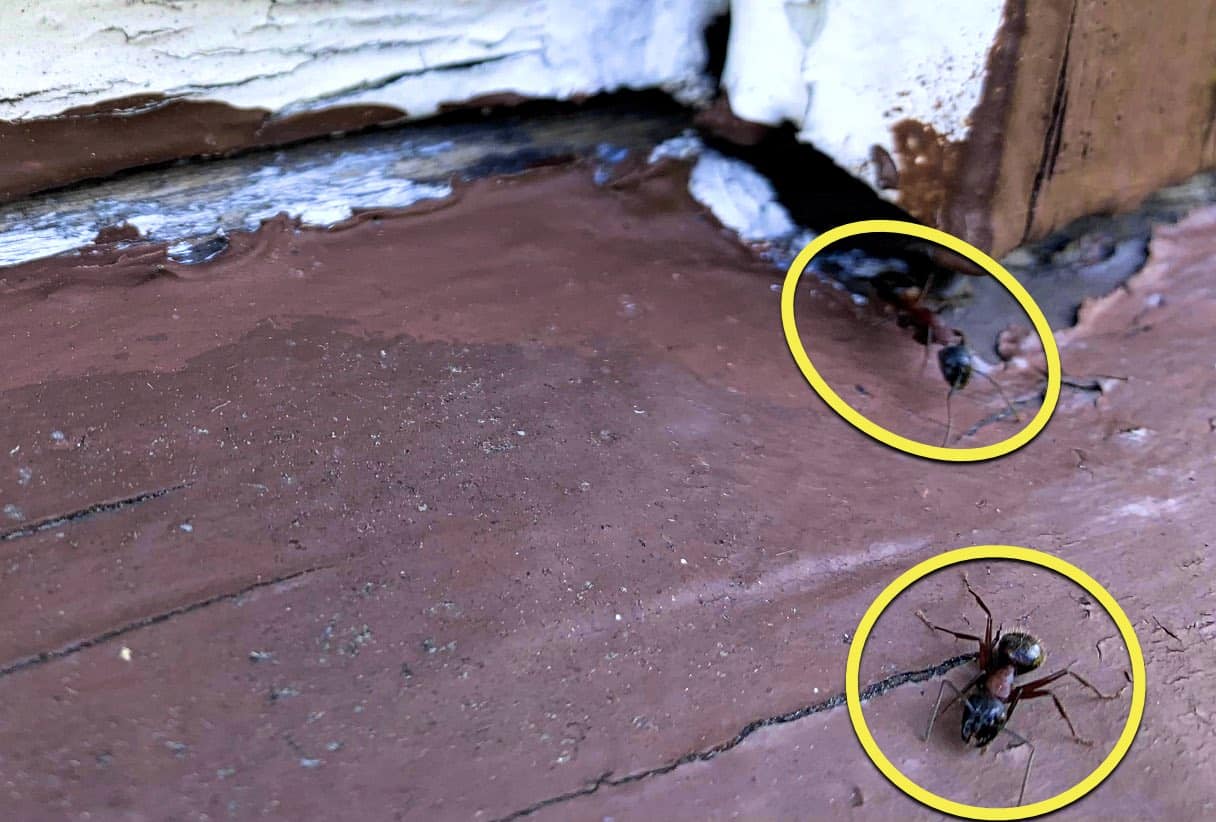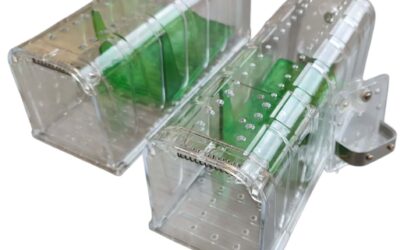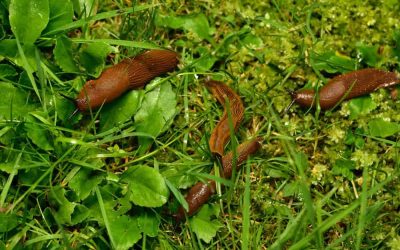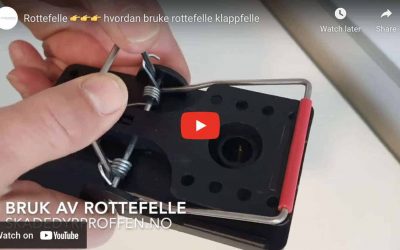Do you have problems with cane ants in your house? Or do you think so? Read on here and you will find out how you can find out if you have ants in your house, and what you should do to remove them.
Skadedyrproffen is run by a professional pest control company that has strong expertise in treatment against cane ants, and we know that the methods described here work very well. Here you will find out how you can fight cane ants yourself.
(If you want help to get rid of cane ants, contact us. We do this in the whole of Southern Norway, and have good partner companies throughout Norway.)
Stick ants destroy buildings
Stick ants are one of the few insects that can actually do major damage to buildings. Many people think that they eat the wood, just like house bucks and striped borers, but they don’t. The ant gnaws out the wood to make a place to live. It can be difficult to prevent attacks, but you can do something (see below).
If you discover such ants inside your building, or nearby, you should deal with them immediately. A fight can take a couple of months, so it’s good to get started. See the packages here at Skadedyrproffen, for do-it-yourself treatment.
How can you tell if there are cane ants?
What characterizes cane ants
Stick ants are the largest type of ant we have in Norway, and they can be up to 18 mm long. Of the cane ants you will normally see (the workers), the size varies from 5-14 mm.
Stick ants have a black head, while the body can vary between black and red. Therefore, it is often confused with the red forest ant, also known as the piss ant.
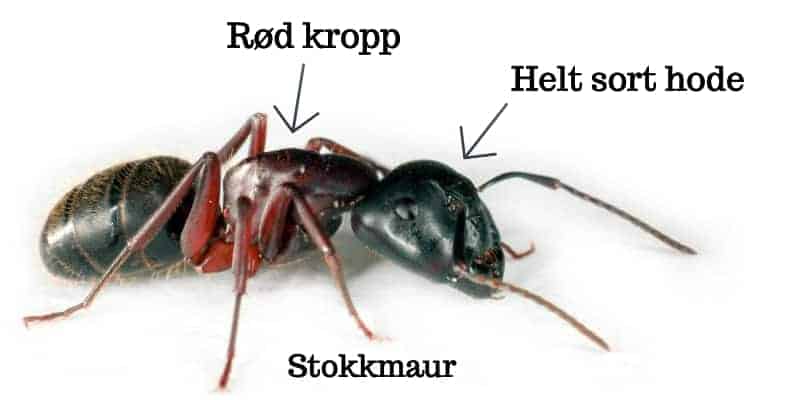
Cane ants versus forest ants
Many people confuse stick ants with red forest ants (piss ants), as both are quite large. But it’s easy to tell the difference between them when you know what to look for:
Take a picture and look at the head
We recommend taking a good picture of the ant and then zooming in on the picture on your mobile to see if the ant’s head is completely black, or if there is something red on the head. If there is something red then it is a wood ant and not a stick ant, but if the head is completely black it is a stick ant.
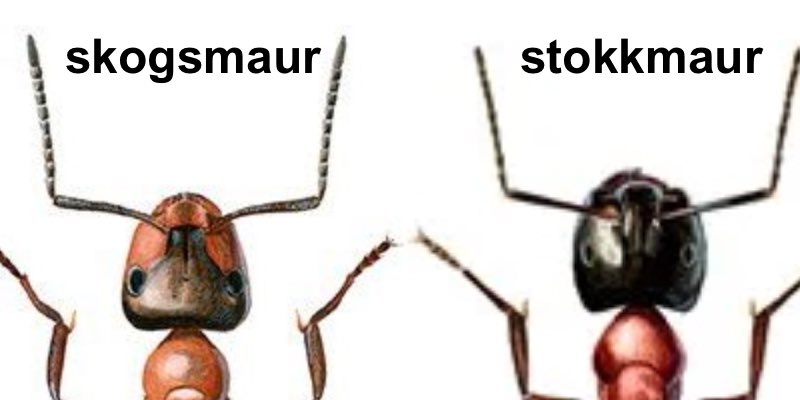
Difference in behavior
In addition, you can also easily see a difference in behaviour. The forest ant is hot-tempered, while The cane ant is «just kind».
The finger test: If you bring your finger down to almost nudge the ants, a forest ant will stand up, push out its «butt» and get ready to squirt acid. It is because of this attack that they are also called piss ants. A forest ant will also like to try to bite if you get too close.
A stick ant, on the other hand, they are not hot-tempered. It will normally just go around the finger. Repeatedly you can disturb it and it will just try to get away. If it is really pushed, it might lunge, but mostly it tries to get away from you.
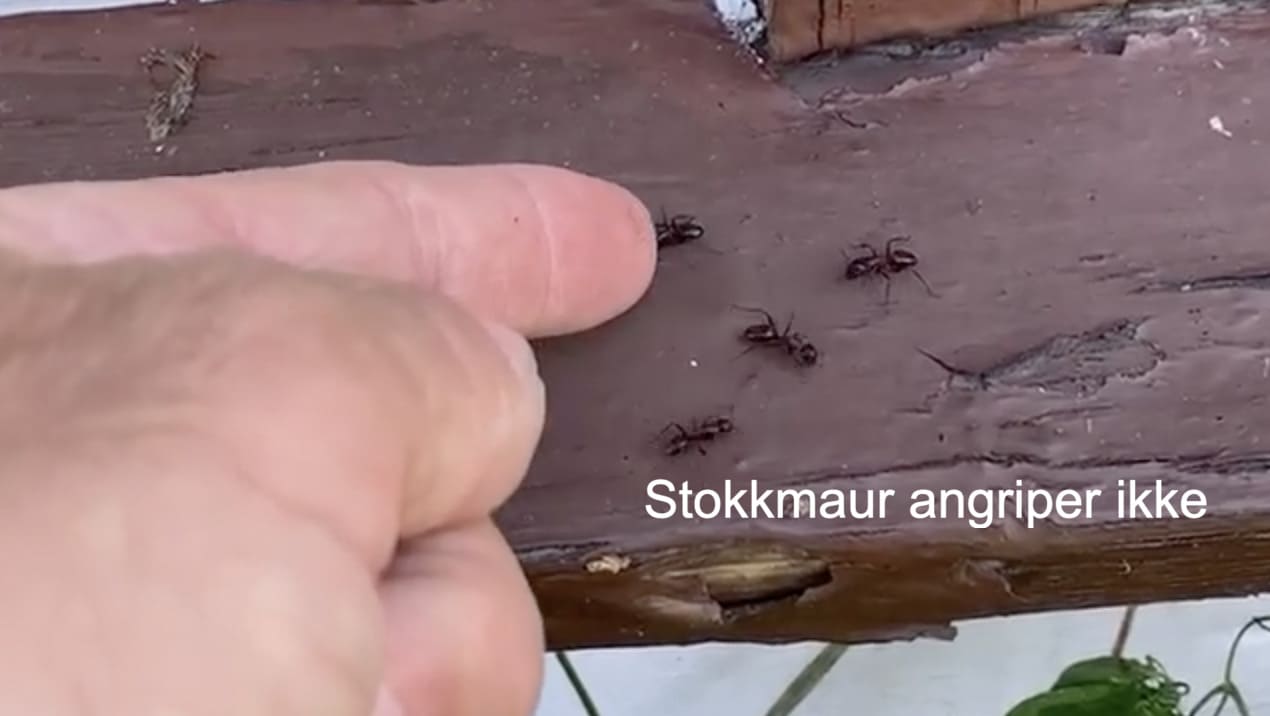
If a forest ant and a stick ant get into a fight, the stick ant will usually lose, because it is not aggressive and not good at fighting either. It is good at building, as well as digging in the wood.
Stick ants versus Sugar ants
The stick ant is much larger. With its 5-14 mm, it is significantly larger than the Sugar Ant (black earth ant), which is normally only 3-5 mm long. They are otherwise quite similar, both in appearance and behaviour.
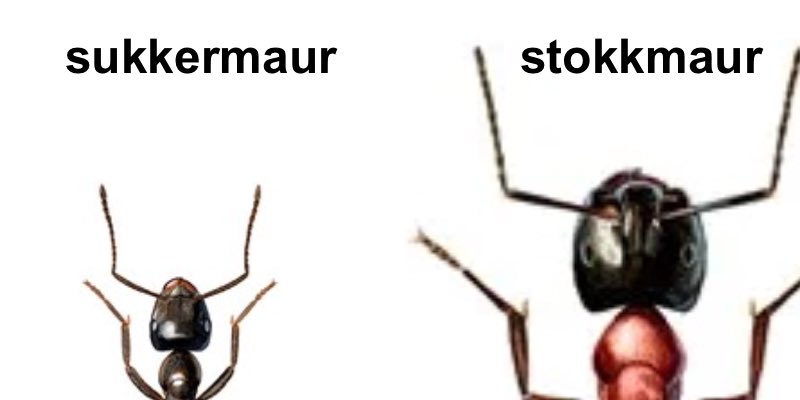
Both types of ants are combated in the same way.
How to get rid of cane ants inside? [ løsning ]
If you see that you have got Stokkmaur in the house, then you have to start with a fight. Getting this right can be difficult, as it requires a basic understanding of how the ant behaves and reacts, and how it is structured.
Here we tell you how to proceed:
How to remove cane ants in the house
The first thing you need to do is to find out where you have ants in the house. Take your time and look carefully at where the ant trails go.
- You can see that the ants go empty-handed in one direction, and return with food. Follow them as far as you can and see where they go with the food. That’s where the nest is.
- Look for where the ant throws out wood chips or shavings, and possibly insulation materials. This is where the nest is built.
- If it’s quiet in the house, you can too often hear rustling from where they build ant nestsespecially in walls.
When you now know where the ants live, you have to check carefully whether they can live somewhere else too. The stick ant can have several nests, and especially when fighting nests directly, you have to take them all at the same time.
All antacids work against cane ants, even if it is often not stated on the package. But larger quantities and more time are required to get a satisfactory result. (More about this below)
Inaccessible or unlocated nests should be controlled with poisoned bait as a limited indirect treatment. See the possibilities below:
Fighting nests directly, or indirectly?
There are two different approaches to combating Stokkmaur. Either you can uncover the nests and attack them directly, or you can work a bit more long-term with feeding stations.
If you are sure where the nests are then you can do a direct fight, otherwise we recommend using feeding stations.
Option 1: direct combat
If you want to carry out an effective and successful pest control, you must find all the nests. It may be one nest, and it may be 5 nests. All nests must be fought simultaneously without delay.
DO NOT open up to the nest until you have the ant mud ready
It is important NOT to rush in to the cane ants until you have everything ready for the fight. Mix ready watering agent and have all poison spray ready first. If you were to start tearing first, and the ant discovers it, it will quickly escape to another place in the house and you will have a bigger problem.
Use contact anticide that you spray directly into the nests
If you can, it’s best to open up and expose an entire community, then treat it with the right type of anticide right away. Then there is a great possibility that you will succeed. You must use a quick contact ant killer, and you must spray continuously inwards as you open up layer by layer in the nest. Both ants and eggs must be sprayed. The most important thing is to get the queen(s) killed.
Recommended ant killers are Trinol watering agent and Permethrin spray.
The satellite colonies must also be fought
Be aware that cane ants often have satellite colonies, and they can be inside the house or in the garden around the house. So if you have also noticed cane ants in a stump or behind a stone, you must attack them directly at the same time. Again, it is important not to lift on stones and the like until you have a watering agent ready to hand.
Option 2: Use of bait treatment (recommended)
If you’re not sure where all the nests are, or you don’t want to dig into where you think they are, then your best bet is to use scavenging.
What is bait treatment, and which bait is recommended?
Baiting means using a poisoned bait that you feed the ants with. This is time-consuming and can be difficult, but when you succeed in getting the ants to eat the bait, you are well on your way to success. Therefore, we also recommend starting with two different ant routes (see below).
Bait intended for use with cane ants is not allowed to be sold to anyone other than professional pest controllers.
But we have good experience in using some specific ant roots. Although on paper they are not «strong enough» to work on Stokkmaur, we have experienced that these work when you give the Stokkmauren enough of it, over enough time.
We have good experience with the use of Swirr ant rot and Kvitt ant agent in gel form. We recommend using both, because sometimes the ants prefer one over the other.
Check the recommended ant package against cane ants.
How to use the bait?
Place the bait in an ant bait box for cane ants. You can/should not use the regular small ones for sugar ants. You have to use the big ant bait boxes.
The bait is placed where you see the ants walking, and as close to the nest as possible. Ants are lazy, and when you give them a food dish very close to home, they will eventually end up getting the food there. When most of the colony then eats the ant rot, you will see that the control starts to work faster than if they were to get food elsewhere too.
Don’t run out of food!
It is very important that the bait boxes do not run out of bait. Remember to buy enough! You have to replenish food as long as you see ants coming. It is best to put strips of ant rot inside the bait box so that as many ants as possible can be eaten at the same time. Do not put the bait in a big pile, but lay out the bait as lines on 3 sides of the square box. It is generally better to feed less and replenish more often (ants like fresh food).
When you finally see that there are no more ants, you must not remove the anthill. You must leave it there for preferably 3-4 weeks afterwards.
How long does it take?
Controlling ant rot like this can take up to a couple of months.
It is best to start such control in early summer. If you start in late summer, you often have to follow this up again next spring. Remember that ant poison is a fresh product, so if it has been in an opened tube for a long time, we would recommend buying new ant poison to start again in the spring.
Do not use other treatment (spray/watering agent) while you are using bait treatment against ants inside
It is important not to disturb the ants when applying baiting. So you must not spray with insect spray (Permethrin for example). Neither on the ant paths, on ants or elsewhere. You have to let the ants move naturally and be eaten by the bait.
Using insect spray along paths and other places where ants stay has very little benefit, and can make things worse.
Video showing the removal of cane ants
Questions and answers about cane ants
What damage cane ants do
Stick ants are the largest ant we have in this country and they are one of the few insects that can damage buildings. A common misconception is that they eat the wood. Many people think that it eats wood, but it doesn’t. It gnaws away and removes material to make room for housing.
Ant damage is often a symptom of underlying problems with moisture in the structure. Normally, dry wood is too hard for cane ants to take up residence in. So check the house for damp where you find these unwanted guests.
Are cane ants dangerous
The stick ant is not as dangerous as many people think it is. It can cause major damage to structures in buildings, but most often it is because there is a problem with moisture in the wood in the building. Although it can damage fresh and dry wood, it most often does it on damp wood.
Stokkmauren also work late, so from the time they establish themselves in a building, it often takes 7-10 years before you have a major problem with large communities.
Do cane ants have wings?
Yes, if flying ants are discovered inside a home, this is a sign that they have established themselves and that a large community lives in the floor, walls and/or ceiling. Then they probably had to hold on for a number of years. Then you should start fighting immediately, and also continue next spring.
How to prevent cane ants?
Preventing ant infestations is difficult, but there are a number of things you can do to reduce the likelihood of a cane ant infestation. Here are some of the measures you should consider doing something about:
- Wood should not rot near the house, and especially not near the foundation wall. Old stumps in the garden should therefore be removed.
- and you should check the home for moisture, water damage is repaired quickly and crawlspaces and attics must have dry conditions and be well ventilated. Stick ants are not known to take up residence in dry conditions.
- Keep the outdoor area tidy so that the ants do not have a natural hiding place around the foundation wall. Avoid bushes, plants, sun-heated stones and piles of wood close to the foundation wall.
- The ant does not like pebbles and gravel. A belt of gravel around the foundation wall can therefore have a preventive effect.
- Check doors and windows for cracks and seal if necessary – so that the ants cannot crawl in.
Vårt skadedyrteam kan hjelpe deg i Oslo når du trenger det!
Skadedyrselskaper i Oslo og omegn er levert av Oslo Skadedyrkontroll. Vi har tatt hånd om flere skadedyrangrep gjennom årene på Sørlandet og Østlandet. Som et resultat kan vi gi eksepsjonelle råd om skadedyrbekjempelse til både privatkunder og kommersielle kunder. Utryddere ved vårt Oslo skadedyrbekjemperfirma er høyt utdannede, kunnskapsrike og i stand til å yte best mulig service.
Oppdagelsen av skadedyr i hjemmet eller bedriften din kan være en urovekkende opplevelse. Sammenlignet med andre byer har Oslo den tetteste bybefolkningen, noe som er gunstig for skadedyr som rotter og mus, samt skadedyr som kakerlakker, veggedyr, klesmøll og plagsomme fugler. En matkilde så vel som en trygg havn. Med våre skadedyrtjenester i Oslo kan du være sikker på at hjemmet eller kontoret ditt er skadedyrfritt.
Vi tilbyr bekjempelse av skadedyr i Gamle Oslo , Frogner og andre områder.
Vi tilbyr Oslo og omegn:
- Vi gir raske, effektive behandlinger – individualiserte og målrettede ut fra dine behov
- Skadedyrråd – bidra til å forhindre fremtidige angrep
- Oslo og Norge betjenes av sertifiserte skadedyrteknikere
- Vi hjelper HORECA-firma
Ta kontakt med oss hvis du trenger skadedyrbekjempelse til din restaurant, en lagerenhet eller hjemmet ditt.

